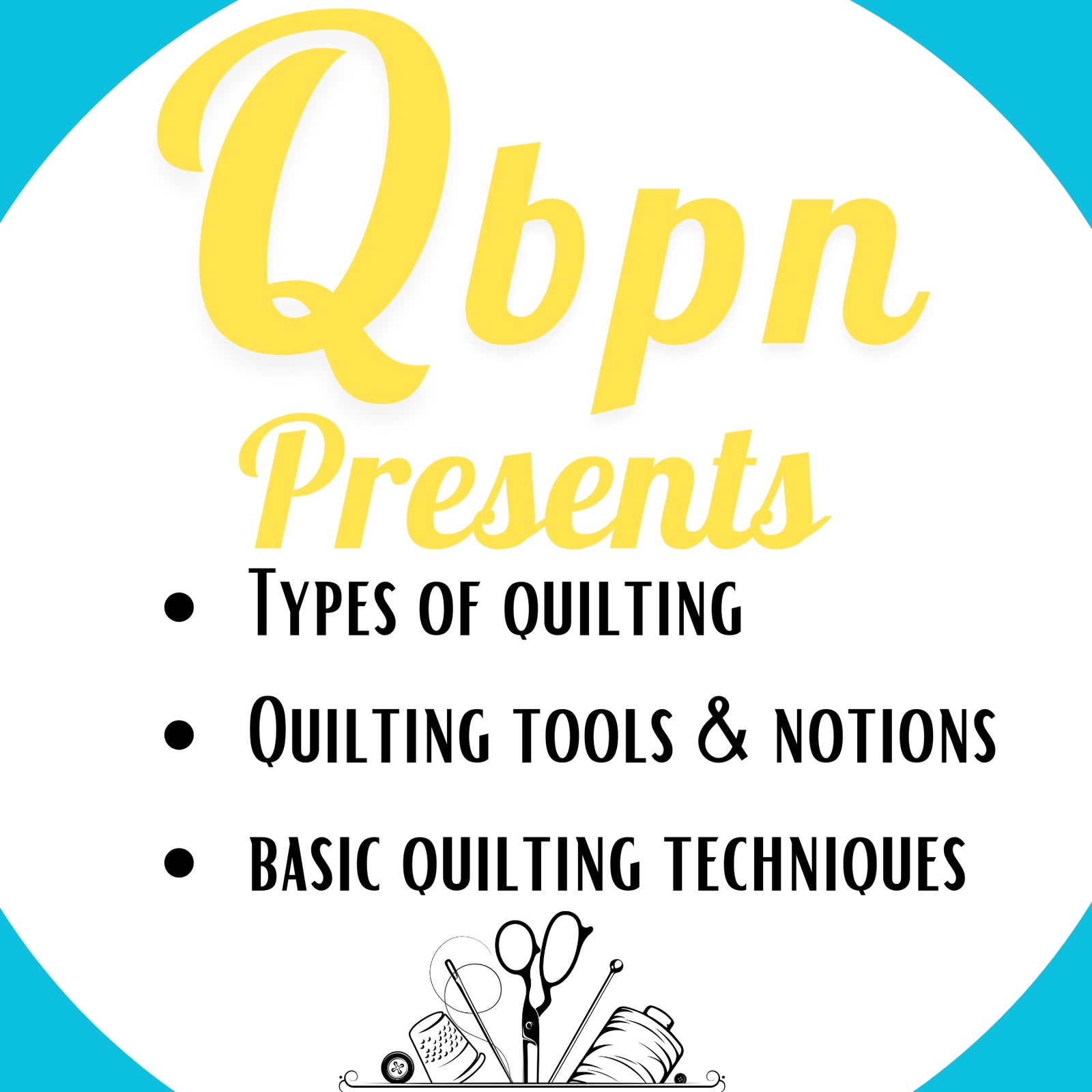Quilting is a timeless craft that weaves together creativity, precision, and tradition into beautiful, functional pieces of art. From the variety of quilting types to the essential supplies and fundamental techniques, this article will serve as a comprehensive guide for both beginners and seasoned quilters.
Different Types of Quilting
Quilting is a versatile craft with various styles, each characterized by unique patterns and methods. Some popular types include:



Patchwork quilting is a form of quilting that involves sewing together smaller fabric pieces, or patches, to form a larger design. It's a traditional and versatile quilting technique where various shapes, such as squares, rectangles, triangles, or other geometric forms, are combined to create intricate patterns. One of the fascinating aspects of patchwork quilting is the variety of designs and patterns that can be achieved by arranging the fabric patches in different ways. This creativity allows for endless possibilities, from traditional patterns like Log Cabin or Nine Patch to more modern or improvisational designs.
Quilting Supplies and Tools
Having the right supplies and tools is essential for a successful quilting project. Here are some of the basics.
FabricChoose high-quality quilting cotton in various colors and patterns to suit your design. Even when using pre-cut bundles, ensuring top-notch material supports the quilt’s overall success and durability. For beginners, pre-cut fabric bundles like fat quarters and jelly rolls are a game-changer. These bundles offer pre-cut pieces in standard sizes, sparing the intimidation of extensive cutting and measuring. Jelly rolls, with strips around 2.5 inches wide and the fabric's full width, typically 42-44 inches long, present coordinated collections of prints or colors. They’re perfect for beginners diving into quilting without fretting over fabric coordination. Conversely, fat quarters, measuring roughly 18x22 inches, provide a versatile square shape, ideal for crafting various quilt blocks or shapes. Their size and adaptability make them perfect for experimenting with diverse patterns and designs.
View our variety of fabric, jelly roll, and fat quarter bundles available here.

Figure 2 Fabric Selection
Cutting Tools
Rotary cutters, cutting mats, and acrylic rulers are essential for precise fabric cutting. Together, these cutting tools create a highly efficient and accurate fabric-cutting system. They streamline the process, allowing quilters to cut multiple layers of fabric simultaneously, saving time and ensuring uniformity in fabric shapes. The combination of a rotary cutter's precision, a cutting mat's protective surface, and acrylic rulers' accurate measurements makes fabric cutting for quilting more manageable, enhancing the overall quality and consistency of quilt blocks and designs. What did the cutting mat say to the fabric? "You're on the cutting edge of fashion!"
View our variety of rulers and cutting tools here.

Figure 3 Cutting Tools
Sewing Machine (or Needle and Thread):
While some quilting can be done by hand, a sewing machine can speed up the process. Ensure it has features suitable for quilting, such as a walking foot and quilting needles.
Thread - Opt for high-quality threads specifically designed for quilting. Cotton threads are popular as they blend well with cotton fabrics commonly used in quilts. They provide strength and durability while sewing layers of fabric and batting together. Threads labeled as "quilting thread" often have a smoother finish and a bit of sheen, enhancing the overall appearance of the quilt.Needles - Quilting needles come in various sizes and types. For piecing the fabric together, use sharp and thin needles (usually labeled as "quilting" or "sharp" needles) that can easily penetrate multiple layers of fabric. For hand quilting, needles with a small eye and a tapered point are preferred.
View our variety of thread and needles for your quilt project here.
Batting - This material goes between the quilt top and backing, providing warmth and structure. Choose batting based on warmth, loft, and ease of quilting.
Basic Quilting Techniques
Mastering fundamental quilting techniques sets the foundation for creating stunning quilts.
Piecing:Piecing in quilting is the process of joining fabric shapes together to create blocks or designs. Accuracy in piecing is fundamental, whether you're working on traditional quilt blocks or exploring contemporary designs. Two critical aspects that greatly influence the quality of piecing are precise cutting and maintaining a consistent seam allowance.
Quilting Stitches:
Explore various stitch patterns like straight line, free-motion quilting, echo quilting, or stippling to add texture and dimension to your quilt. The choice of quilting stitch pattern can greatly impact the quilt's appearance and feel. Experimenting with different techniques on a sample piece or quilt sandwich allows you to identify which stitches best complement your design and personal style. Intertwining various quilting stitch patterns within a quilt can produce dynamic effects and accentuate different sections of the quilt top. Ultimately, quilting stitches not only serve the practical function of securing the layers but also play a pivotal role in enhancing the quilt's visual allure, establishing them as an integral aspect of the quilting journey.
Binding:
The final step in completing a quilt involves neatly finishing its edges through a process called binding. This technique entails meticulously sewing binding strips along the quilt's perimeter, creating a polished and durable closure. Beyond its practical role of securing the quilt layers, binding contributes to a professional and visually appealing border. A skillfully executed binding enhances the quilt's overall presentation, delivering a clean and durable edge that harmonizes with the quilt's design and craftsmanship.
Quilting Designs:
Experiment with different quilting designs—such as feathers, loops, or geometric patterns—to enhance the visual appeal of your quilt.
Quilting is not just a craft; it's a form of storytelling through fabric, stitches, and design. Whether you're drawn to traditional patterns or eager to explore your artistic side, the world of quilting offers endless opportunities for creativity and self-expression. Start with the basics, let your imagination soar, and embark on a journey filled with stitches that tell tales of warmth, comfort, and creativity.









